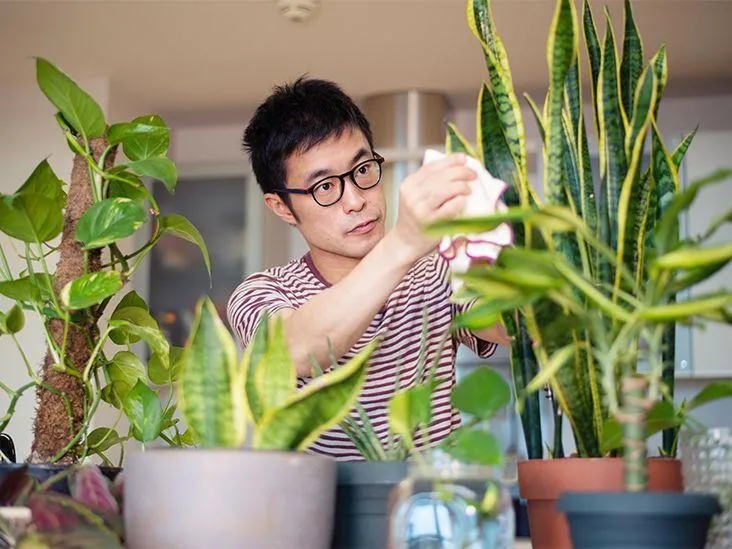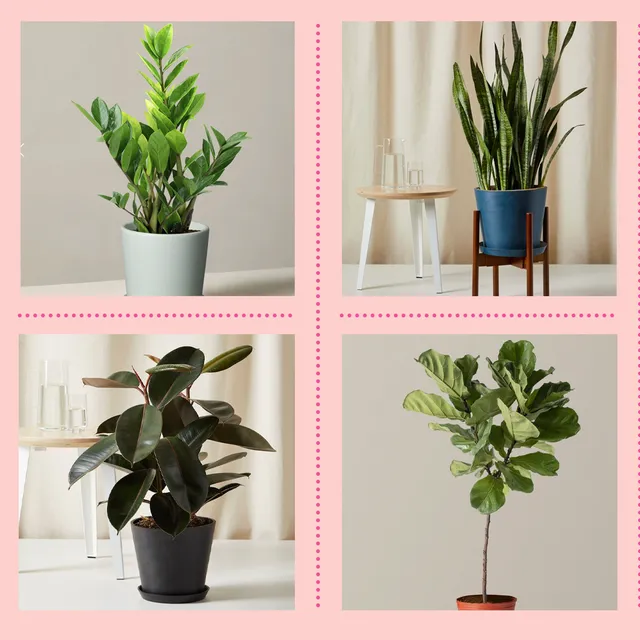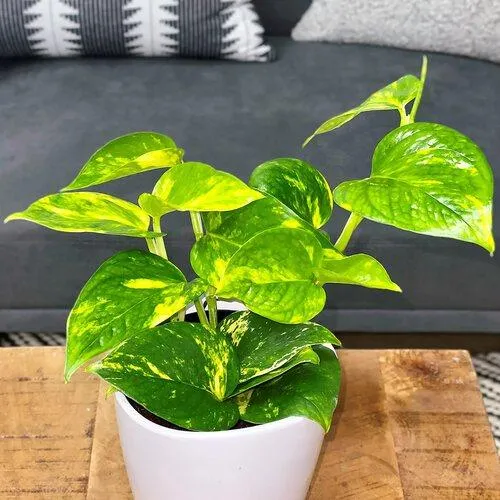The Best House Plants That Grow Like Trees
If you’re looking to bring a bit of nature indoors but don’t have the space for a full-sized tree, house plants that grow tall like trees are a great option. From my experience caring for various indoor trees over the years, these plants can really transform a room with their vertical greenery. In this article, I’ll cover some of the best tree-like houseplants to consider and provide answers to common questions homeowners have about growing them indoors.
Chinese Evergreen
The Chinese evergreen (Aglaonema) is one of the most popular tropical tree-like plants for indoor spaces. It has simple, leathery leaves in varied colors like red, pink, white and green that emerge vertically on long stalks. Chinese evergreens prefer medium to low indirect light and thrive with consistent moisture in rich, well-draining potting soil. They can reach heights over 5 feet tall with proper care. One thing I’ve found from experience is that these plants are very forgiving – even if they go a week without water, they generally bounce right back.
Dwarf Date Palm
For a true miniature palm tree option, consider the dwarf date palm (Phoenix roebelenii). Growing only 3-6 feet tall maximum, it has a slender trunk and feathery foliage. However, be warned that dwarf date palms do require very bright light to avoid becoming leggy. In my experience, an unobstructed south or west-facing window is ideal. They also enjoy warm indoor temperatures above 65°F. While small, these palms have a true tropical tree appearance that can elevate any room.
Cornstalk Plant
With its tall, bamboo-like stalks topped with bristly evergreen leaves, the cornstalk plant (Dracaena fragrans) is one of the easiest tree-like houseplants to care for. It thrives in medium to low light and tolerates dry conditions better than many tropicals. From what I’ve seen, this plant can grow 6-10 feet tall indoors over several years. Just water whenever the top few inches of soil become dry. Cornstalk plants are quite hardy too – I once went over a month without watering mine by accident and it recovered with no issue!

Rubber Plant
Related to Dieffenbachia and often mistaken for it, rubber plants (Ficus elastica) have waxy, wavy-edged leaves and a thick, braided trunk. They make a nice architectural statement and can reach 10+ feet tall given adequate light and care. I’ve found that these plants prefer slightly drier soil compared to others and handle under-watering quite well. Just be sure not to overwater, as soggy soil can cause leaf drop. Overall, rubber plants are kind of like the equivalent of a long-living houseplant tree.
Kentia Palm
For a classic palm tree look, you can’t beat the Kentia palm (Howea forsteriana). With a slender trunk and circular arrangement of dark green fan leaves at the top, miniature Kentias only reach 6-8 feet tall maximum. However, they do require very bright indirect light to prevent yellowing – a south- or west-facing window is best from my experience. They also prefer moderate moisture. Kentias make a great architectural centerpiece for any size room with the right care.
Common Questions About Growing Houseplant Trees
How Much Light Do They Need?
Light requirements vary between species, but in general tropical tree-like plants need medium to bright indirect light. North-facing windows often don’t provide enough illumination and can result in thin, leggy growth over time based on what I’ve seen. East or west exposures filtered through a sheer curtain work well. Be sure to rotate plants weekly so all sides receive equal light. If leaves yellow, try moving to a sunnier spot.

What About Watering?
- Allow top 1-2 inches of soil to dry out between waterings for most varieties.
- Feel the soil with your finger to check moisture level down to the second knuckle – if it’s dry, water thoroughly until drainage occurs.
- Water less in winter when light levels are lower.
- Use tepid water at room temperature to avoid shock.
Do They Need Fertilizer?
Houseplant trees generally do well with a dilute liquid fertilizer every few months during the main growing season (spring-fall). I’ve noticed a good general purpose 20-20-20 formula works well. Be sure to follow label directions and flush with plain water occasionally – too much fertilizer can actually damage roots based on what I’ve seen from others’ mistakes. Tall plants also appreciate an annual pruning and repotting into a slightly larger container with fresh potting mix.
What About Pests?
Like any indoor plants, tree-like tropicals are susceptible to common houseplant pests. Keep an eye out for signs of insects such as scale, mealybugs or spider mites – a cotton swab dampened with rubbing alcohol does the trick in my experience. Check leaf undersides regularly to stay on top of potential infestations before they become problematic. Good sanitation practices go a long way to prevention. Humans often overlook pests until there’s a serious infestation.
Are They Pet-Friendly?
Most houseplant trees are non-toxic to pets if ingested in small amounts. However, plants like dieffenbachia and some palms contain calcium oxalate crystals that can irritate mouth and gastrointestinal tract if eaten. It’s wise to place tall plants up high or behind closed doors if furry friends like to chew on greenery. At the same time, well-behaved pets should present no issue for decorative indoor trees in appropriate locations.
In conclusion, tropical tree-like houseplants are a fantastic way to bring the feeling of an indoor forest oasis to any home. With the right growing conditions and care, species like Chinese evergreen, rubber plant and Kentia palm can thrive for years. While a bigger commitment than seasonal flowers, tall indoor “trees” are equally rewarding in my opinion. With a bit of TLC, these plants can basically transform a space from drab to fab with their natural vertical accents. Hopefully this guide has provided helpful answers for choosing and maintaining your new houseplant tree friend! Let me know if you have any other questions.

Top Indoor Tree Plants for Your Home
| Plant | Size | Care Requirements | Light Needs |
|---|---|---|---|
| Money Tree | 3-6 feet tall | Water when top inch of soil is dry. Fertilize in spring and summer. | Bright indirect light |
| Weeping Fig | 6-10 feet tall | Water when top inch of soil is dry. Mist leaves to increase humidity. | Bright indirect light |
| Chinese Evergreen | 2-4 feet tall and wide | Water when top inch of soil is dry. Prune to maintain shape. | Bright indirect light |
| Dwarf Umbrella Tree | 3-6 feet tall | Water when top inch of soil is dry. Prune to maintain shape. | Bright indirect light |
| Kentia Palm | 6-10 feet tall | Water when top inch of soil is dry. Mist frequently. | Bright light |
FAQ
-
Can trees be grown indoors as houseplants?
Yes, there are several varieties of trees that can grow well indoors as houseplants. Some options include dwarf citrus trees, bonsai trees, and Parlour Palms.
-
What types of trees work best as indoor plants?
The most common tree varieties used as indoor plants are Parlour Palms, Dwarf Date Palms, Dwarf Citrus Trees like Meyer Lemon and Kumquat, and Bonsai trees. These species adapt nicely to indoor conditions.
-
How much light do indoor trees need?
Most indoor tree plants need lots of bright, indirect sunlight each day. Aim to put them in an east or west facing window where they’ll get at least 6 hours of light daily. Some trees like Parlour Palms can handle lower light conditions for short periods.
-
What size pot is appropriate for an indoor tree?
The pot size you pick depends on the mature size of the tree variety. Generally, select a container about 2-3 inches wider than the tree’s root ball. Repot into a slightly larger pot every couple years as the tree grows. Overpotting can lead to root rot.

-
How often should indoor trees be watered?
Water indoor trees when the top inch or two of soil becomes dry. The frequency can range from every 5-10 days depending on the type of tree and growing conditions. Stick your finger in the soil to get a feel for moisture levels. Underwatering causes leaf drop while overwatering results in root rot.
-
Is pruning necessary for indoor tree plants?
Pruning indoor trees helps keeps them healthy and shapely. Snip off dead or diseased growth as needed. Lightly trim trees in spring to maintain their size and shape. Major pruning can be done in winter when trees are semi-dormant. Proper pruning promotes new growth.
-
What are some problems with growing trees indoors?
Pests like spider mites and scale insects may become an issue indoors with lower humidity. Provide adequate sunlight and moisture or trees may lose leaves. Shifting temperatures and light levels between indoors and outdoors can shock some trees. Moving trees outside for summer may help prevent indoor issues.
